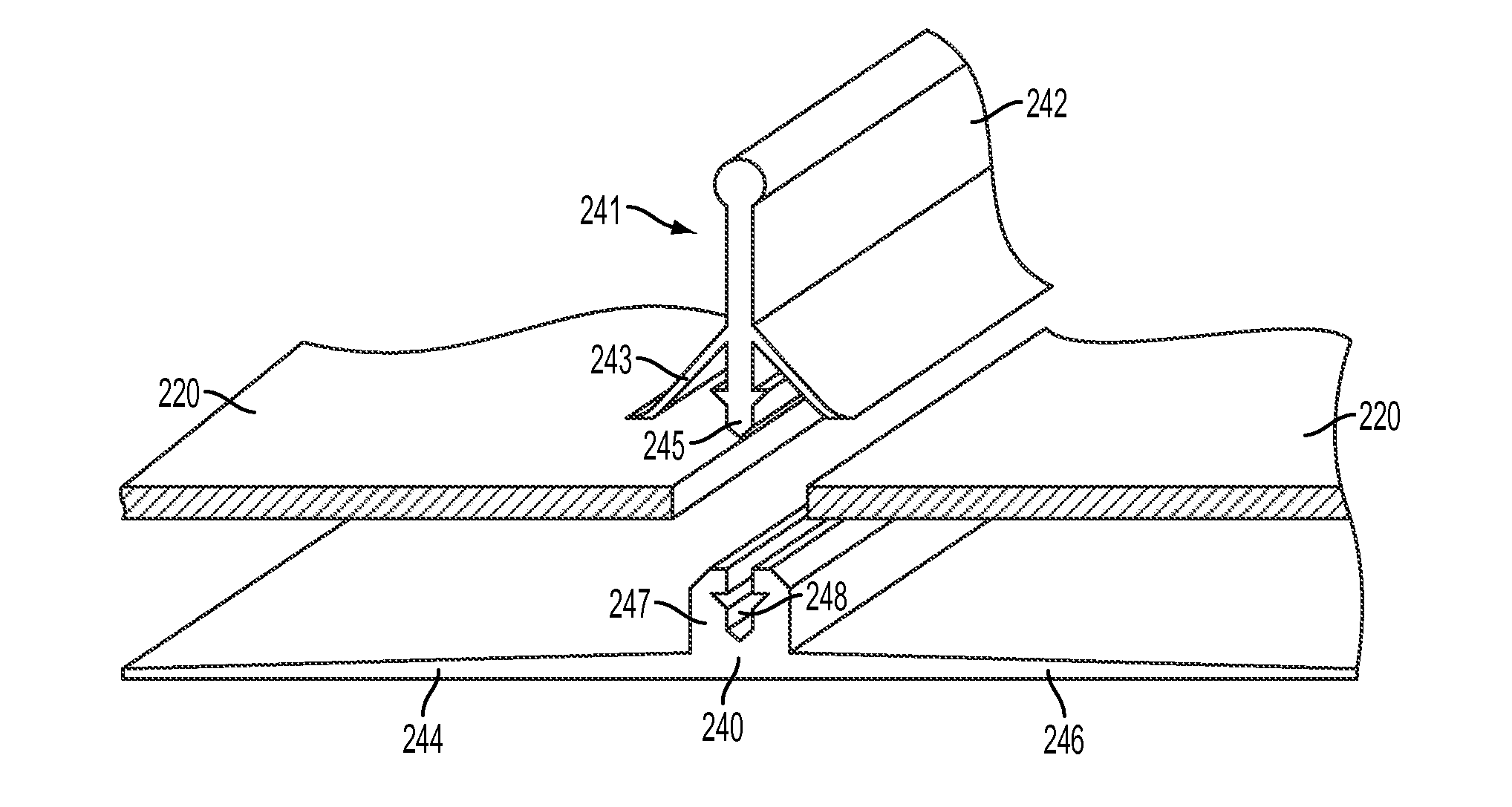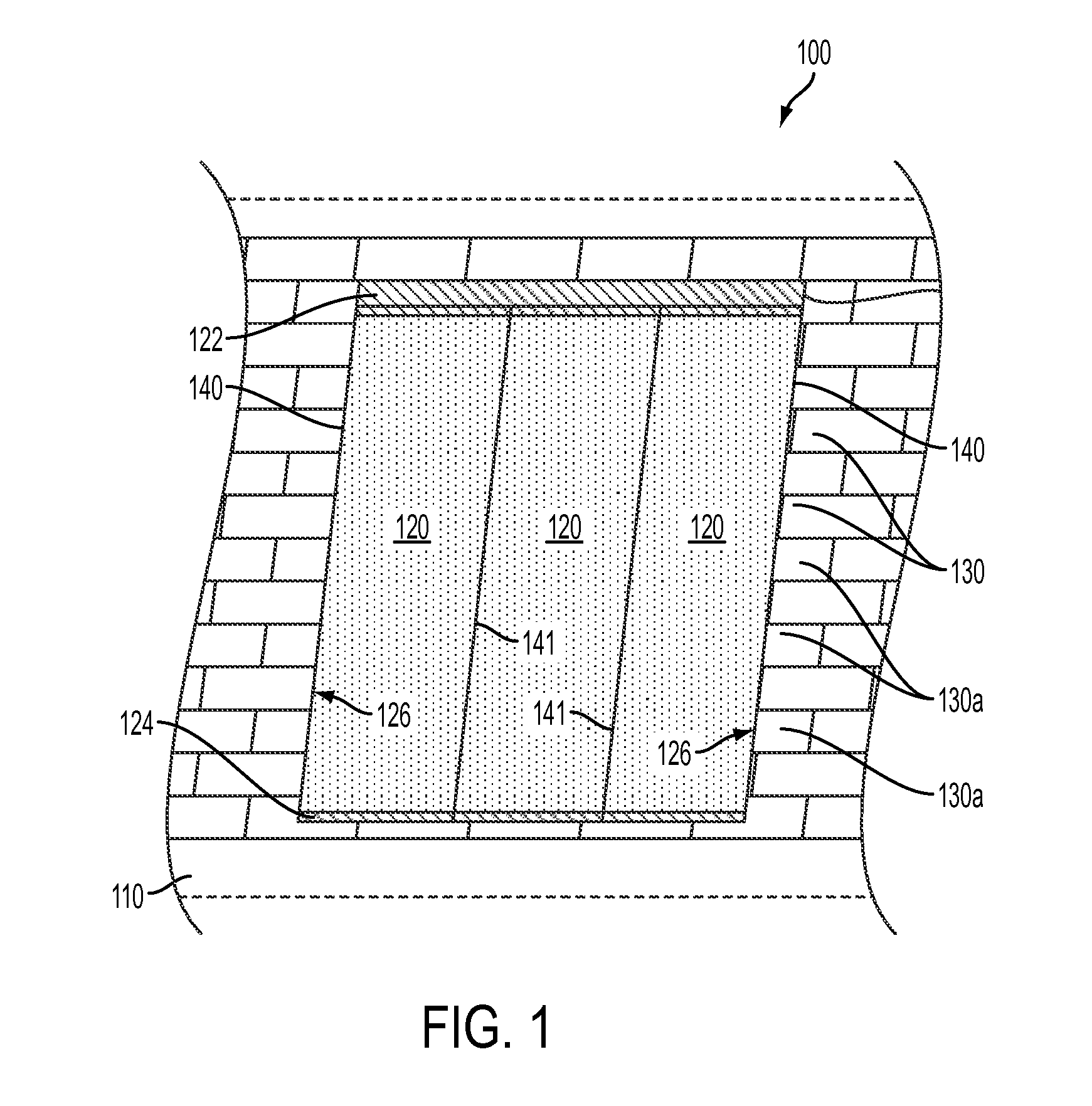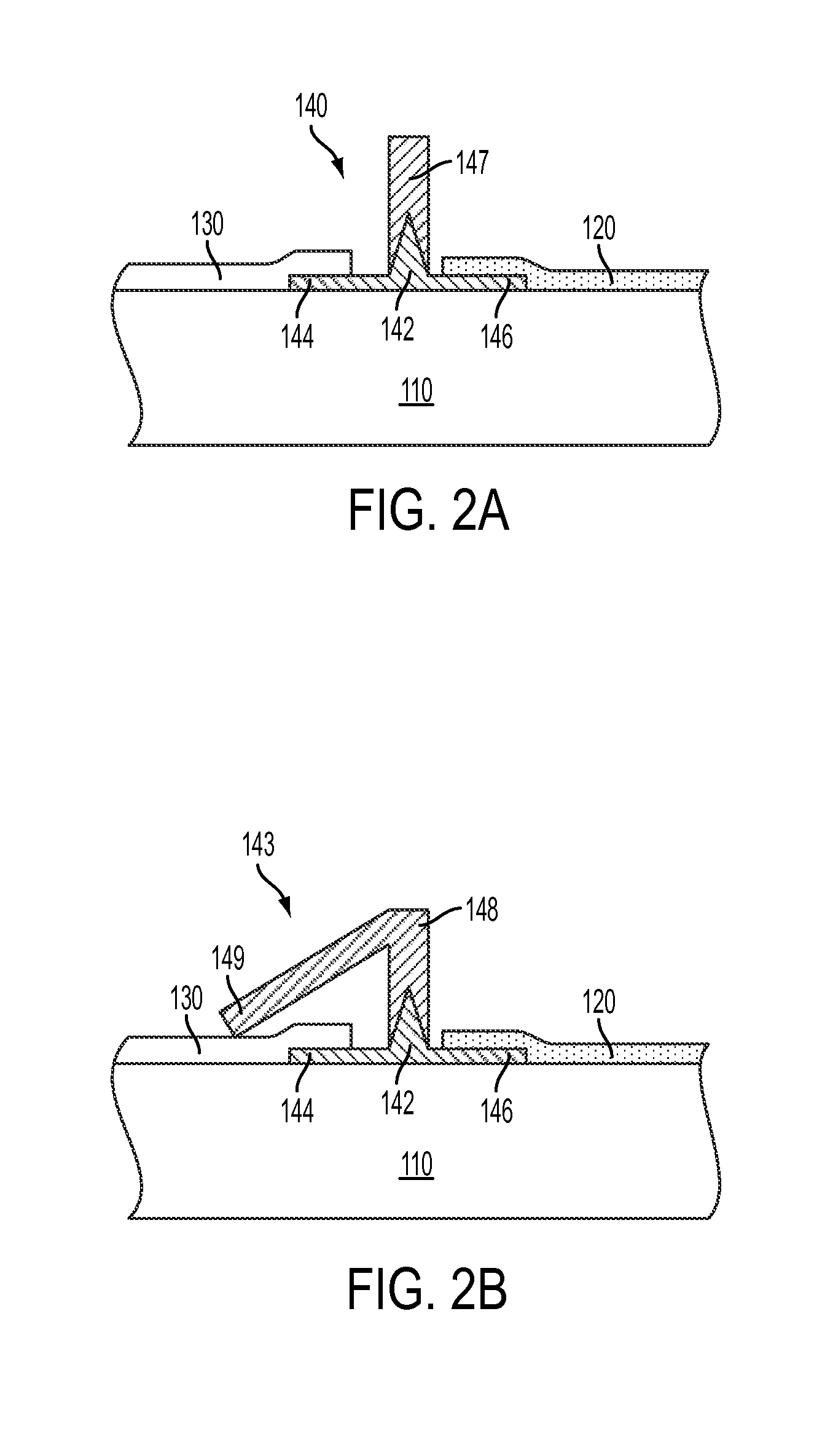Photovoltaic Roofing Components And Systems
a technology of photovoltaic roofs and components, applied in the direction of heat collector mounting/support, building repairs, lighting and heating apparatus, etc., can solve the problems of increasing the cost of fossil fuels, affecting the appearance, and being heavy and bulky, so as to avoid corrosion and facilitate the replacement of damaged parts.
- Summary
- Abstract
- Description
- Claims
- Application Information
AI Technical Summary
Benefits of technology
Problems solved by technology
Method used
Image
Examples
Embodiment Construction
[0036]In one aspect, the present invention provides a two-part tee element (i.e., usable as a framing piece) for a roofing integrated photovoltaic system. The two-part tee element includes a base piece (e.g., in strip form); and a top piece (e.g., in strip form). In one aspect, a base piece includes two opposed horizontally-extending first and second flanges extending from a central portion. A first photovoltaic element can be disposed on the roof adjacent to the base piece, with its edge disposed on the horizontally-extending first flange. Desirably, the photovoltaic element overlaps the first flange by at least about one inch. A second photovoltaic element or a roofing element can be disposed on the roof adjacent the base piece opposite the first photovoltaic element, with its edge disposed on the horizontally-extending second flange. Desirably, the second photovoltaic element or the roofing element overlaps the second flange by at least about one inch. A top piece attachment feat...
PUM
| Property | Measurement | Unit |
|---|---|---|
| height | aaaaa | aaaaa |
| height | aaaaa | aaaaa |
| width | aaaaa | aaaaa |
Abstract
Description
Claims
Application Information
 Login to View More
Login to View More - R&D
- Intellectual Property
- Life Sciences
- Materials
- Tech Scout
- Unparalleled Data Quality
- Higher Quality Content
- 60% Fewer Hallucinations
Browse by: Latest US Patents, China's latest patents, Technical Efficacy Thesaurus, Application Domain, Technology Topic, Popular Technical Reports.
© 2025 PatSnap. All rights reserved.Legal|Privacy policy|Modern Slavery Act Transparency Statement|Sitemap|About US| Contact US: help@patsnap.com



